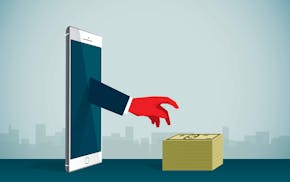Dr. Gary Goldish and biomedical engineer Andrew Hansen have created a hub of medical device innovation in an unexpected place — the Minneapolis Veterans Medical Center — to serve an overlooked population. Goldish, director of extended care and rehabilitation at the VA, and Hansen joined forces in 2009 to launch the Minneapolis Adaptive Design and Engineering program (VA-MADE) to develop adaptive technologies to help veterans with disabilities. VA-MADE has received 17 patents, raised more than $10 million in research funding and grown to a staff of two dozen. Goldish and Hansen this month are applying for a $4.5 million grant to make the program a national resource for clinician-driven product development for veterans and accelerate product commercialization.
Q: How did VA-MADE get started?
Goldish: I'm a rehab doctor; physical medicine rehab is my specialty. My subspecialty is spinal cord injury. We're trying to change what people with physical disabilities can do. I was writing my ideas down for many years in a notebook. They sat in a file and didn't go anywhere until I met Andy. We hit it off, and I realized that there's a formula here for how innovation can get out of my brain or off a piece of paper.
Hansen: I honestly just want to solve problems. I want to solve good problems, real clinical problems. I don't care if they're wheelchairs or exercise equipment. We're really interested in what's called participation. Participation is really: Are you able to do the things you want to do? The things at work, school, family, social things. Are you going out there and being you?
Q: What would you hope to accomplish as a national center?
Goldish: There are things we've learned in the last 10 years about how to work within the VA that we would like to share with other innovation people. We are now writing a center of excellence grant to bring this model to center stage of the VA. We're going to use the University of Minnesota, which is good at marketing technology.
If you solve a problem only for the veteran and it doesn't have a great market value, if it doesn't get manufactured, it doesn't help the veteran. If we can get a product out there and it comes back and helps veterans, that's my primary goal. This gives us a pot of money to support the infrastructure so that we can write more grants, do more research and become a resource to the rest of the country.
Hansen: One piece we would add is business personnel. We have some businesspeople in our group but we could strengthen that side where they're out doing early market assessments and talking to industry stakeholders and trying to understand regulatory hurdles. We want to do those things as early as possible so as soon as an idea comes in. Most ideas aren't going to become a product. We want to figure out which ones aren't going to be, quickly, so we can get onto the promising ones.
Q: What is an example of a product you are developing?
Goldish: The standing wheelchair. Spinal cord-injured patients for years have had the ability to use devices like standing frames so they can wheel up to their standing frame, stand up and maybe just go into a standing position and read a magazine or you watch TV. And it's very boring but it's very hard to function when you're stuck in a standing position and can't move.
Several years ago people made electric wheelchairs that can stand up. You use a joystick to move around. But now you have a wheelchair that costs as much as a car and probably weighs pretty close to what a car does. Trying to move that around is not easy. They also made manual standing wheelchairs that allow people to stand up so they can wheel around sitting down, but once they stand up, the wheels are still on the ground so they can't go anywhere.
I came up with the idea to change that. Andy and I teamed up to make that real. So you can wheel around in a sitting position and quickly go to a standing position and wheel around while standing. So now I can be part of the conversation. I can come and have a handshake. I can go talk to you. I can go work at the kitchen counter and I don't have to sit down to wheel over to get the salt and come back and stand up again. I can be fluid. I can work in a standing position. It increases dramatically my ability to work and function — participate — in the world.
Q: How close is the standing wheelchair to getting to market?
Hansen: It's in progress. We're doing this in collaboration with Levo, a standing wheelchair company in Brooklyn Park. About October we will hand this over to the company if all goes well, and they will do wheelchair testing and hardening the design for release. The Department of Veterans Affairs is funding the project.
Goldish: We've been in a relationship with them for the last three or four years called a CRADA (collaborative research and development agreement.) We work together; government and private enterprise can collaborate. They've provided materials for us and some know-how but we modified their design.
Q: How many equivalents to VA-MADE are in the VA system?
Goldish: There aren't MADEs by that name. There are research centers of excellence all across the country. Rehab funds 12 or 14. It's a competitive process. There hasn't been a center opening since we started this. This is our first shot. It's been 10 years since the last new center was opened. There's a lot of pent-up demand.
Minnesota's med spa industry rises in popularity — and with little regulation

Ramstad: Readers say Walmart won't be paying the ultimate price of Trump's tariffs

How Minnesota businesses can spot and prevent invoice fraud
No place for cryptocurrency in retirement portfolios

